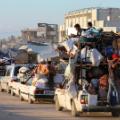Our live coverage of the Israel-Hamas war has moved here.
December 8, 2023 Israel-Hamas war
By Heather Chen, Sophie Tanno, Adrienne Vogt, Tori B. Powell and Elise Hammond, CNN
The US vetoed a UN Security Council resolution calling for a ceasefire in Gaza. Here's the latest
From CNN staff
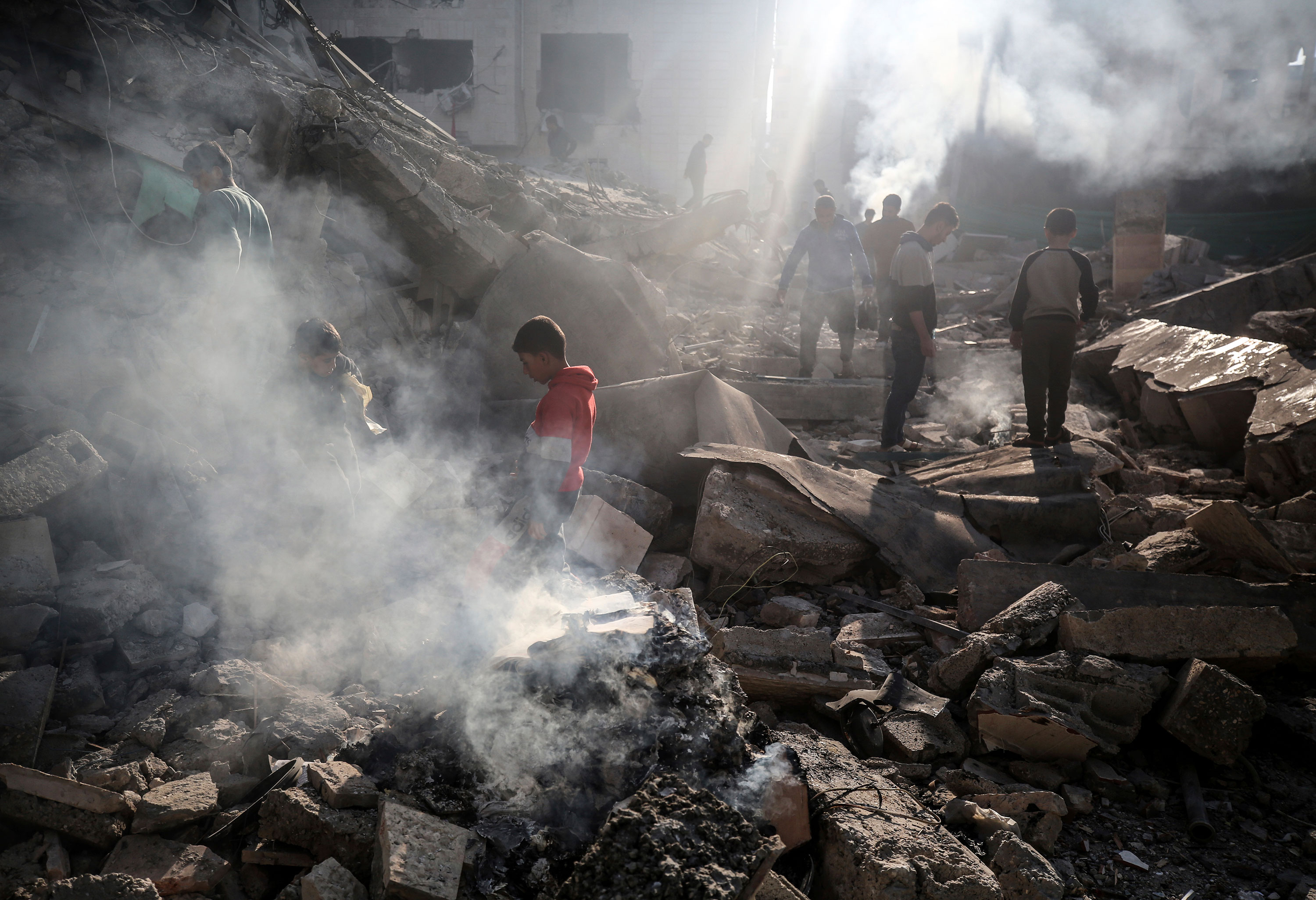
The United States vetoed a United Nations Security Council resolution calling for an immediate ceasefire in war-torn Gaza amid growing concern about the civilian death toll there.
Thirteen countries were in favor of the resolution while the United States vetoed and the UK abstained. At least 97 other countries joined in the effort, co-sponsoring the United Arab Emirates-drafted bill.
UN chief Antonio Guterres on Friday called the current state of affairs a threat to international peace and security, saying that "we are at a breaking point," as the enclave faces hunger and hundreds of strikes daily.
These are the main headlines so far today:
- More on the ceasefire resolution: According to a draft copy presented by the United Arab Emirates, the resolution called for “an immediate humanitarian ceasefire,” as well as “the immediate and unconditional release of all hostages” and “ensuring humanitarian access." Israel's Ambassador to the UN Gilad Erdan thanked the US for its veto decision, but charitable organizations like Human Rights Watch, Oxfam and Amnesty International decried the move. Palestinian Prime Minister Mohammad Shtayyeh and Palestinian Ambassador to the UN Riyad Mansour also condemned the US veto, with Mansour calling it a “sad day.” Hamas, also condemning the veto, described it as an "immoral and inhumane position." As the only country that abstained, the UK's Mission to the UN said the country could not vote on a resolution that "does not condemn the atrocities Hamas committed against innocent Israeli civilians on the 7th of October."
- Images of detained men: The Israel Defense Forces and Hamas responded to images that showed a mass detention by the Israeli military of men in Gaza who were blindfolded and stripped down to their underwear. A spokesperson for the Israel Defense Force claimed the men were "Hamas members and suspect Hamas members." A member of Hamas’ political office accused Israel of "kidnapping, invasive searches, and disrobing" what he said was "a group of displaced Palestinian civilians.” At least some of the men detained were civilians with no known affiliation to militant groups, according to a conversation CNN had with one of their relatives and a statement by one of their employers, a news network.
- Strikes in Gaza: The IDF said it carried out strikes on about 450 targets in Gaza over the past day — the highest number reported since the end of a truce with Hamas a week ago. The Israeli military continues to fight in Khan Younis in southern Gaza, which it says is a “main stronghold” of Hamas, according to a statement. Videos geolocated Thursday showed a series of heavy strikes in the city, and dozens of casualties were admitted to hospitals in the area.
- Status of aid: Eleven ambulances and some 100 trucks carrying aid items donated by Turkey reached Gaza through the Rafah border crossing, the Palestine Red Crescent Society (PRCS) said Friday. Just 69 trucks carrying aid entered Gaza from Egypt on Thursday, less than half the daily average during the Israel-Hamas truce last week, the United Nations' humanitarian agency said. The head of the main UN relief agency operating in Gaza said the organization is facing collapse as it deals with constant bombardment, insufficient humanitarian supplies and overcrowded shelters. Nearly 57,000 pounds worth of US aid is being delivered from Jordan to Egypt on Friday via a third flight for humanitarian assistance to Gaza, according to a statement from USAID. And Israel on Thursday said it will open the Kerem Shalom border crossing for the inspection of aid trucks in the "next few days."
- Post-war plans?: US Secretary of State Antony Blinken will meet with a delegation of Arab counterparts from Saudi Arabia, Qatar, Jordan, Turkey and the Palestinian Authority, where the topic of Gaza after the Israeli offensive is expected to be a main point of discussion. US officials have said they ultimately envision both Gaza and the West Bank being ruled by a unified government led by a "revitalized" PA, while Israeli Prime Minister Benjamin Netanyahu has said that will not happen as long as he is in power.
- Death toll: Nearly 17,500 Palestinians have been killed in Israeli attacks in Gaza since October 7, the Hamas-run Ministry of Health said Friday, and more than 46,400 people have been injured. A spokesperson added that the occupancy rate in Gaza hospitals has reached 262%, warning that medical institutions have run out of key supplies. The Hamas-run ministry also said it had identified over 300,000 cases of 15 infectious diseases in shelters. CNN cannot independently verify the numbers.
Rafah is the "almost exclusive area" where limited aid distribution takes place in Gaza, UN office says
From CNN's Ibrahim Dahman and Kareem El Damanhoury
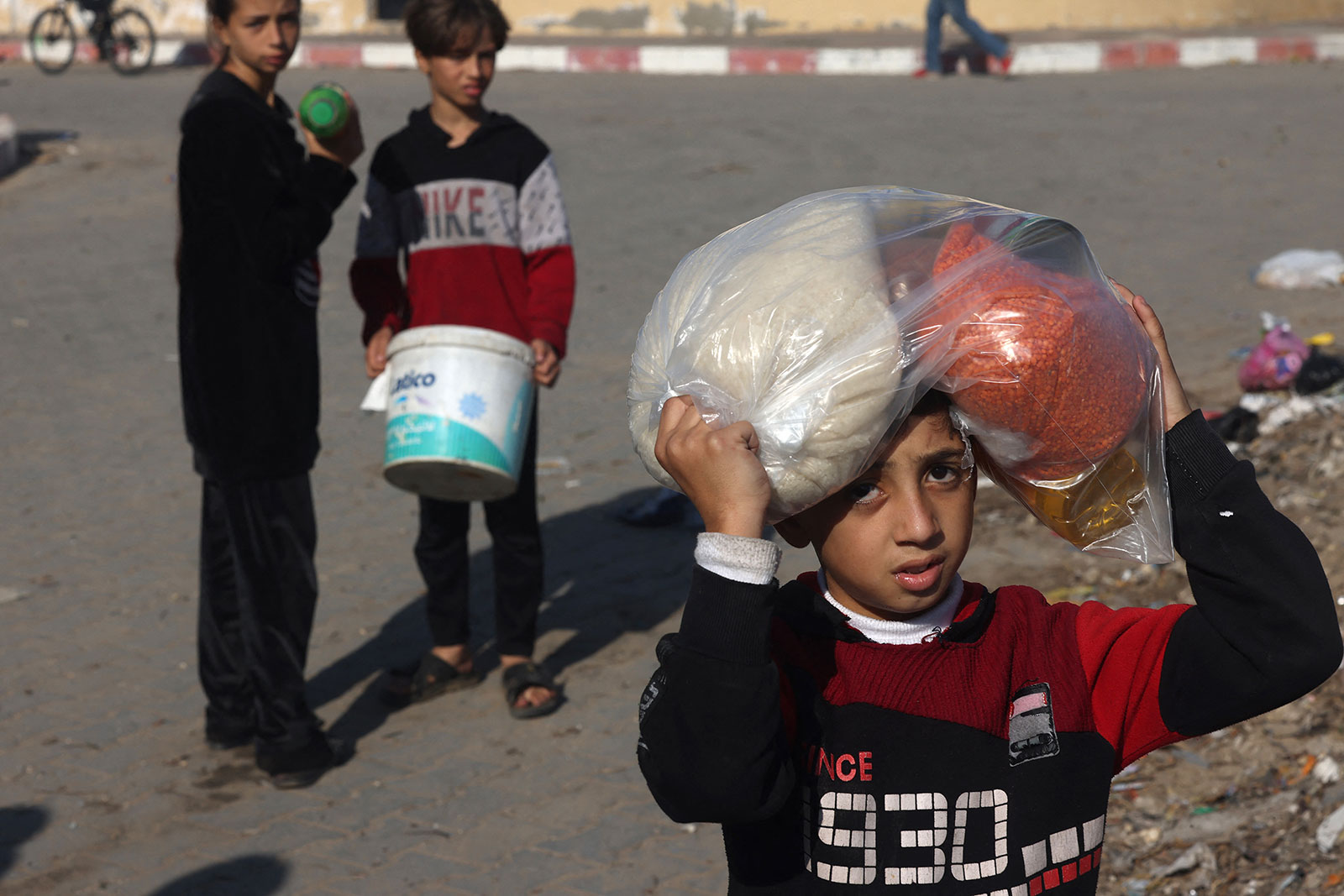
The United Nations Office for the Coordination of Humanitarian Affairs (OCHA) says Gaza's southernmost governorate of Rafah is the "almost exclusive area" in the strip where limited aid distribution is taking place.
"In the Khan Younis governorate and the Middle Area, aid distribution has largely stopped over the past few days due to the intensity of hostilities and restrictions of movement along the main roads, except for limited fuel deliveries to key service providers," OCHA said in a statement early Saturday.
About one million displaced Palestinians are sheltering in UNRWA shelters in south Gaza, OCHA added. Almost 1.9 million people, which is nearly 85% of Gaza's population, have been displaced across the strip since October 7, according to OCHA.
Tens of thousands of those displaced people have been arriving in Rafah since December 3 following evacuation orders by the Israeli military, OCHA said.
The group also reiterated its concerns over overcrowding and poor sanitary conditions in shelters in the south, as well as the lack of toilets for those newly moving to Rafah.
Open air defecation is "widespread" in Rafah increasing "concerns of disease spreading, particularly during rains and related flooding," the statement said.
Committee to Protect Journalists calls for accountability after attack that killed Reuters videographer
From CNN's Kareem El Damanhoury

The Committee to Protect Journalists (CPJ) is calling for accountability after the Israeli attack that killed Reuters videographer Issam Abdallah and injured six other journalists in southern Lebanon in October 2023.
Investigations by Reuters, Agence France-Presse (AFP), Amnesty International and Human Rights Watch revealed it was Israeli tank shells that killed Abdallah and injured the other journalists.
The Israeli military said on Friday it doesn't target journalists and that the incident is still "under review."
CPJ said in its statement that the findings by the two news organizations and the two human rights groups are in alignment with its findings that show a "pattern of lethal force" by the Israeli military against journalists over the past 22 years.
"Since 2001, CPJ has documented at least 20 journalist killings by the IDF [Israel Defense Forces]," CPJ said in its report released in May. "The vast majority — 18 — were Palestinian. No one has ever been charged or held accountable for these deaths."
So far, CPJ has confirmed the killing of at least 63 journalists and media workers in Gaza, Israel and Lebanon since October 7. The death toll is comprised of 56 Palestinian, four Israeli and three Lebanese journalists.
Some more background: A journalist with Agence-France Presse who survived Israeli strikes in southern Lebanon told CNN on Friday the attack appeared to be deliberate.
"You could say maybe if there was one strike you could say it's a mistake, or by accident, they didn't mean to. But if it's two strikes back to back in the same exact spot, it's kind of hard not to see it as a deliberate strike," said Dylan Collins, the Lebanon/Syria video coordinator for AFP.
CNN’s forensic analysis of multiple videos, including a live AFP video feed from the time and place of the attack, determined that the two strikes – 37 seconds apart – which hit the journalists was a supersonic event that came from the direction of Israel.
Israel and Hezbollah were engaged in intense crossfire across the Lebanon-Israel border at the time.
CNN has also seen a photo from the scene of the attack showing the tail fin of a 120 mm tank shell. The photo was verified by a source familiar with the investigation.
Neither the Lebanese army nor the Iran-backed Hezbollah are known to have such ammunition in their arsenal. Read more about the CNN analysis
Infants found dead and decomposing in evacuated hospital ICU in Gaza
From CNN's Allegra Goodwin, Jomana Karadsheh, Abeer Salman, Florence Davey-Attlee and Mihir Melwani
Editor’s Note: The following story includes graphic material. Audience discretion is advised.
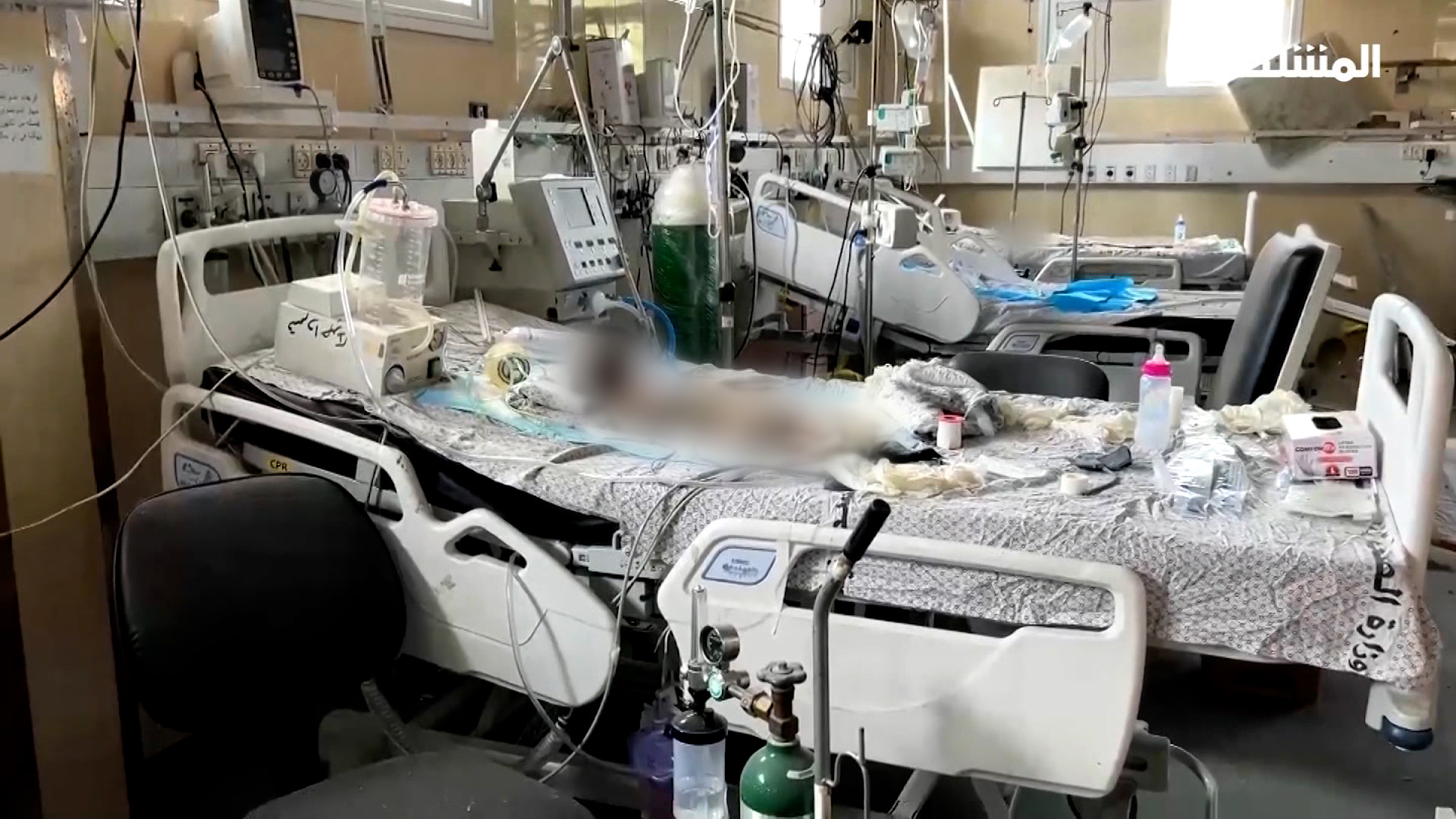
The scene inside the Al-Nasr hospital ICU ward is chilling. The tiny bodies of babies, several still attached to wires and tubes that were meant to keep them alive, decomposing in their hospital beds. Milk bottles and spare diapers still next to them on the sheets.
The video inside the hospital was filmed on November 27 by Mohamed Baalousha, a Gaza reporter for UAE-based news outlet Al Mashhad. He shared an unblurred version with CNN, which shows the remains of at least four infants.
Three of them appear to be still connected to hospital machines. The bodies of the babies appear to be darkening and disintegrating from decay, with little more than skeletons left in some of the beds. Flies and maggots are visibly crawling across the skin of one child.
The circumstances around one of the most horrifying videos to emerge from the war in Gaza remain unclear, but after days of piecing together available information, using interviews, published statements and video, a chaotic scene can been painted of hospital staff trying to protect their most vulnerable patients, caught in the middle of a raging battle – waiting for help that never arrived.
Here is what CNN found: CNN geolocated the video to the hospital in northern Gaza. This area has been largely unreachable to journalists in recent weeks due to the intensity of fighting but during the seven-day truce, Baalousha says he was able to access the hospital to film what was left there.
From early November, the Al-Nasr and Al-Rantisi children’s hospitals, which form part of the same complex, had become the frontline of fighting between Israeli and Hamas forces.
In public statements and interviews, several medical staff and health officials from Al-Nasr said they had to hurriedly evacuate the hospital on November 10, under the direction of Israeli forces.
Medical staff described having to leave young children behind in the ICU because they had no means to safely move them.
A doctor associated with the hospital, who did not want to be named, told CNN that two of the children – a two-year-old and a nine-month-old baby – had died shortly before the evacuation but that three children were left alive still connected to respirators. One of those left alive was two months old. Several of the infants in the ICU had been suffering from genetic disorders, according to the doctor.
The condition of those left behind alive – both at the time the fighting reached the hospital and when the evacuation took place – remains unclear.
Read more about what we know about the evacuated ICU in Gaza
Hostage family members confront Israeli defense minister outside his home
From Tamar Michaelis and Sugam Pokharel
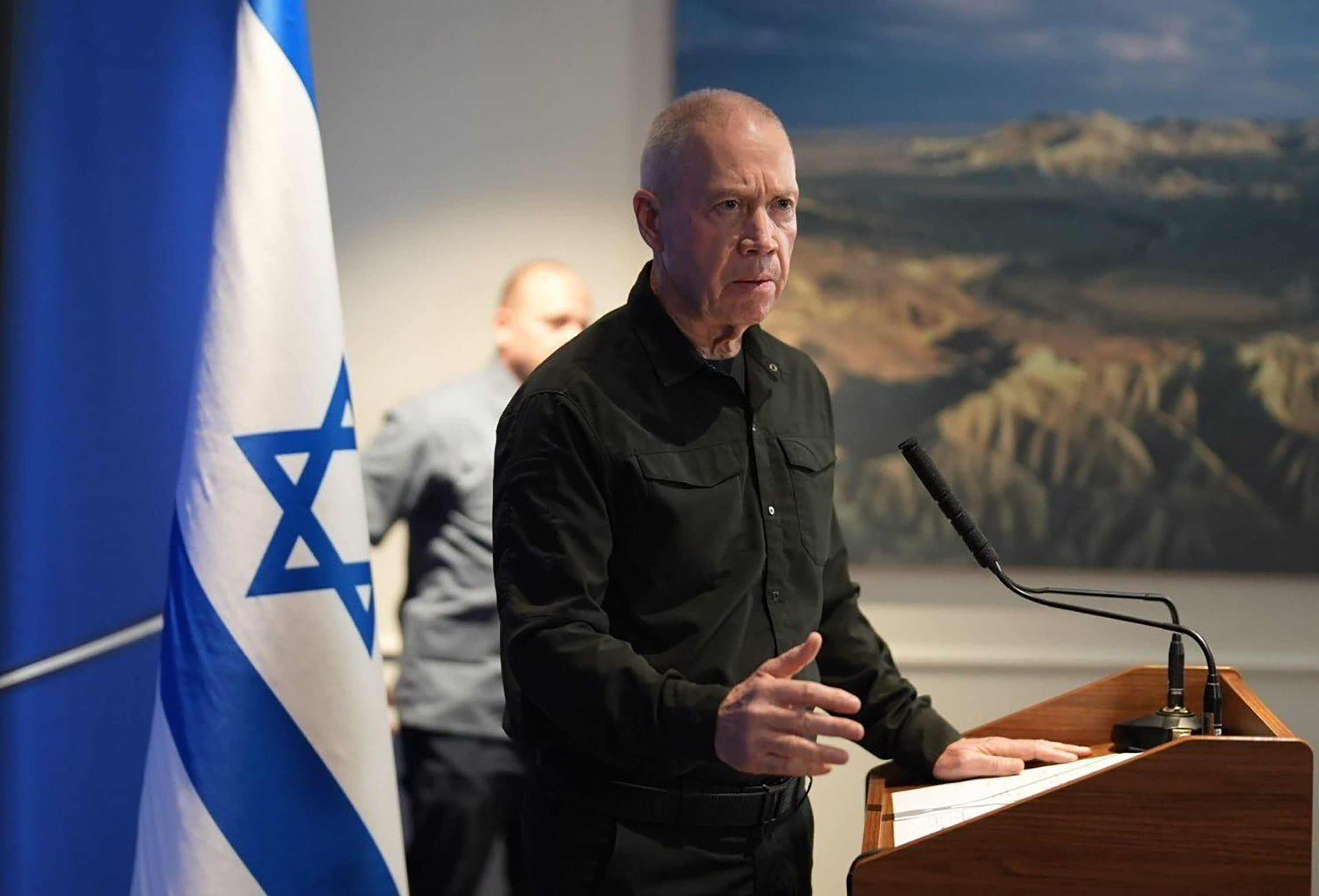
Family members of two hostages currently believed to be held in Gaza confronted Israeli Defense Minister Yoav Gallant outside his home in northern Israel on Friday.
The exchange took place as Gallant tried to explain to two women protesting on the street the Israeli government’s strategy in regard to releasing remaining hostages from Hamas captivity.
“The situation isn’t such that we would give (Hamas) everything, and they give us everything,” Gallant said. “That’s not what they want. They have different aspirations. Therefore, it’s just a psychological deception.”
Ifat Kalderon said “if it doesn’t happen tomorrow, they will actually die.” She is the cousin of Ofer Kalderon, who is thought to be held hostage in Gaza.
“Your whole idea of pumping water [into tunnels], you’ll kill them,” Ifat Kalderon said.
Gallant continued trying to explain the government’s stance.
“I’m explaining something else. Hamas is willing to speak to us only when we’re applying force. If we don’t pressure them, we don’t bring them anywhere,” he said.
Gallant went on to say he believes pressure brought Hamas to a temporary truce and a hostage release deal last month.
“It will happen again,” he tried to reassure the two women.
“With every minute their lives are at risk. Do you know what they eat? Rice and a glass of sea water. How long can they live on that? Without sun and light,” said Dvora Leshem, grandmother of Romi Gonen, who is thought to be held captive in Gaza.
Gallant responded: “We understand the situation, and we want to do things as fast as possible, but unfortunately it doesn’t only depend on us. There is another side and they’re playing, both psychologically and practically."
Leshem urged the minister to first get the hostages out and then fight with Hamas.
Before leaving, Gallant tried to convince the two women, saying: “We will make all efforts.”
“As quickly as possible, so they don’t return inside coffins, but come back alive,” Ifat Kalderon said.
“You will have no one to return,” Leshem warned before Gallant left the scene.
Israel's foreign minister accuses UN chief of siding with Hamas on heels of ceasefire resolution vote
From CNN's Jonny Hallam
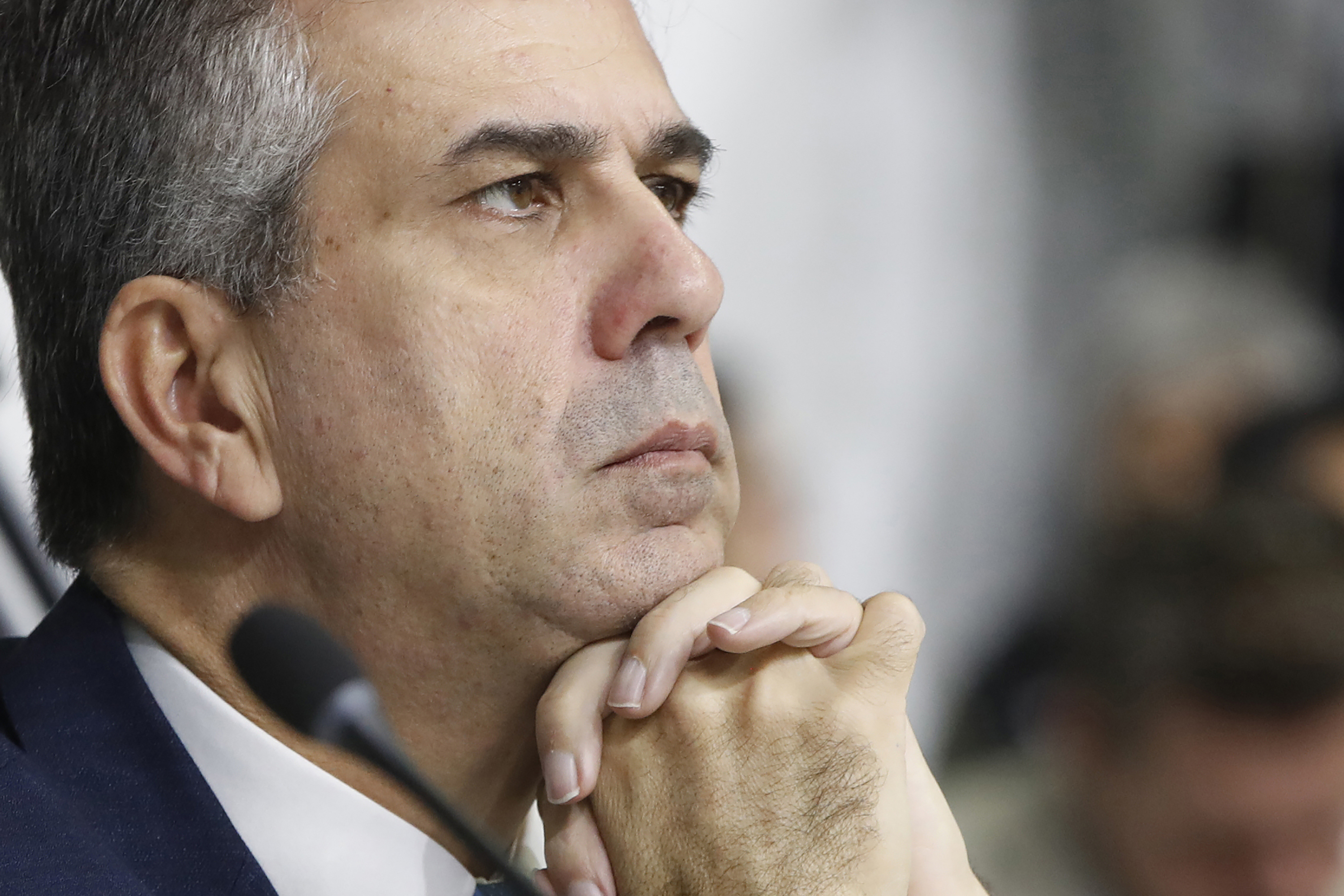
Israel's foreign minister accused the United Nations chief of siding with Hamas after he took the rare move of invoking Article 99 of the UN charter to push for a ceasefire in Gaza earlier this week.
Article 99 gives the secretary general the remit to "bring to the attention of the Security Council any matter which in his opinion may threaten the maintenance of international peace and security."
Secretary-General Antonio Guterres did this on Wednesday when he formally referred the situation in Gaza to the UN Security Council, urging its members to "avert a humanitarian catastrophe" in the besieged enclave.
Israeli Foreign Minister Eli Cohen said in a social media post that Guterres' request "disgraced" his position and was an example of the secretary-general's biased stance against Israel.
It's the first time Guterres invoked Article 99 since he became secretary-general in 2017, a spokesperson said on Wednesday.
In the post, Cohen also expressed his gratitude to the United States after it used its veto to block the Gaza ceasefire draft resolution at the UN Security Council Friday.
He thanked America for "its support to continue the fight to bring the hostages home and to eliminate the Hamas terrorist organization."
CNN's Niamh Kennedy contributed reporting to this post.
Hamas condemns US veto at UN Security Council, describing it as “immoral and inhumane position”
From CNN's Ibrahim Dahman
Hamas has condemned the United States' decision to veto the Gaza ceasefire draft resolution at the United Nations Security Council on Friday, describing it as an “immoral and inhumane position.”
“America’s obstruction of the issuance of a ceasefire resolution is a direct participation with the (Israeli) occupation in killing our people,” Izzat Al-Rishq, a member of the Hamas political bureau, said in a statement.
Some context: The resolution — presented by the United Arab Emirates — had called for “an immediate humanitarian ceasefire,” as well as “the immediate and unconditional release of all hostages” and “ensuring humanitarian access,” according to a draft copy.
Thirteen countries were in favor, the US vetoed and the UK abstained.
The United States had previously signaled disapproval of the draft text. One of the council’s five permanent members with veto power, the US has repeatedly resisted calls for a “ceasefire,” emphasizing Israel’s right to defend itself following Hamas’ October 7 terror attack.
The vote was the sixth attempt by the 15-member group to reach a consensus on the ongoing war between Israel and Hamas. Only one previous vote was successful, which called last month for “humanitarian pauses and corridors” to be established in Gaza.
CNN's Richard Roth, David Shortell and Caitlin Hu contributed reporting to this post.
Israeli strikes that killed journalist in southern Lebanon appeared deliberate, fellow journalist says
From CNN's Niamh Kennedy
A journalist with Agence-France Presse who survived Israeli strikes in southern Lebanon in October told CNN it was "hard not to see it as a deliberate strike.”
Forensic analysis by CNN suggests that Israeli tank fire killed Reuters journalist Issam Abdallah and injured six other international journalists in a double strike on October 13, confirming reports by two news organizations and two human rights groups.
AFP and Human Rights Watch claim in their reports that the strike was a "deliberate," targeted attack by Israel on the journalists.
In a statement to Reuters, Israel Defense Forces spokesperson Richard Hecht said: "We don't target journalists." On Friday, the IDF said the incident is still “under review.”
Hecht on October 14 called Abdallah’s death “a tragic thing,” without naming him directly or acknowledging Israel’s involvement.
Dylan Collins, who is the Lebanon/Syria video coordinator for AFP, told CNN's Bianna Golodryga that those impacted by the incident have been grappling since with "grief and exhaustion."
Collins recounted what started as a "pretty quiet day," describing how teams of Reuters and AFP journalists moved toward a plume of smoke after hearing "loud bangs" along the Lebanon-Israel border.
"It seemed like kind of the perfect place to start working you know. We're exposed to multiple Israeli positions along the border. Everyone was wearing flak jackets, helmets with press written across our chests. We had three live feeds to three international news agencies," Collins recounted.
"The Israelis had drones in the air the entire time. And I imagine you know with their state of the art surveillance capabilities, they could see our faces, they probably knew which channels we were working for... At around 6:02 that evening, we were struck directly... 37 seconds later, we were struck again at the same exact spot almost," Collins added.
Collins said that although he couldn't speak on behalf of Human Rights Watch, he could recount what he had witnessed.
"It was two strikes 37 seconds apart, almost in the same exact location on a group of journalists, seven journalists all wearing press vests and helmets."
"You could say maybe if there was one strike you could say it's a mistake, or by accident, they didn't mean to. But if it's two strikes back to back in the same exact spot, it's kind of hard not to see it as a deliberate strike," Collins added.
Collins reiterated how all the investigations "pointed to a thin stabilized 120-millimeter tank round that killed Issam Abdallah," adding that this is the kind of munition fired by Israeli Merkava tanks.
"I think the evidence is relatively clear in terms of how that how that munition could have been fired," Collins added.
The AFP journalist paid tribute to Abdallah, describing him as the "beating heart of the press scene" in the Lebanese capital of Beirut.
Collins also gave an update on his AFP colleague, Christina Assi, who sustained "devastating" injuries from the strikes which forced her to have one of her legs amputated.
"She's bled more than any human should bleed."
Previous reporting from CNN’s Tamara Qiblawi and Allegra Goodwin
